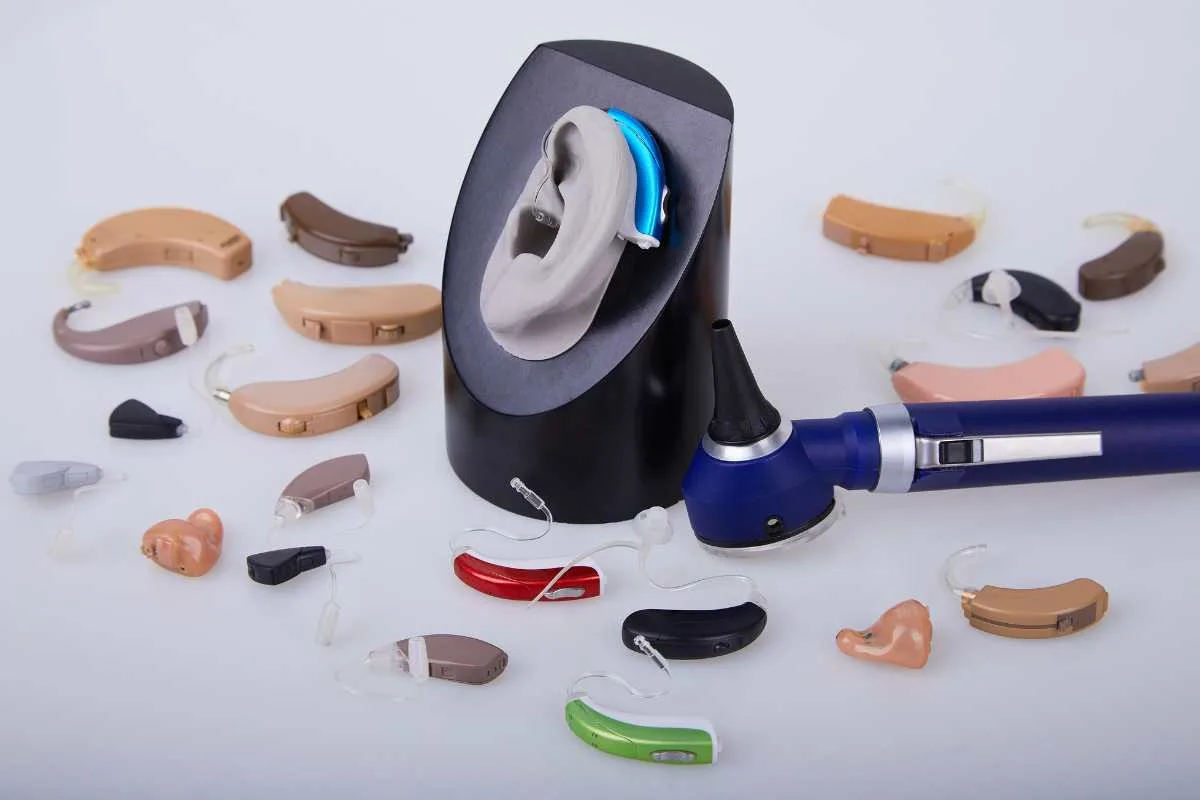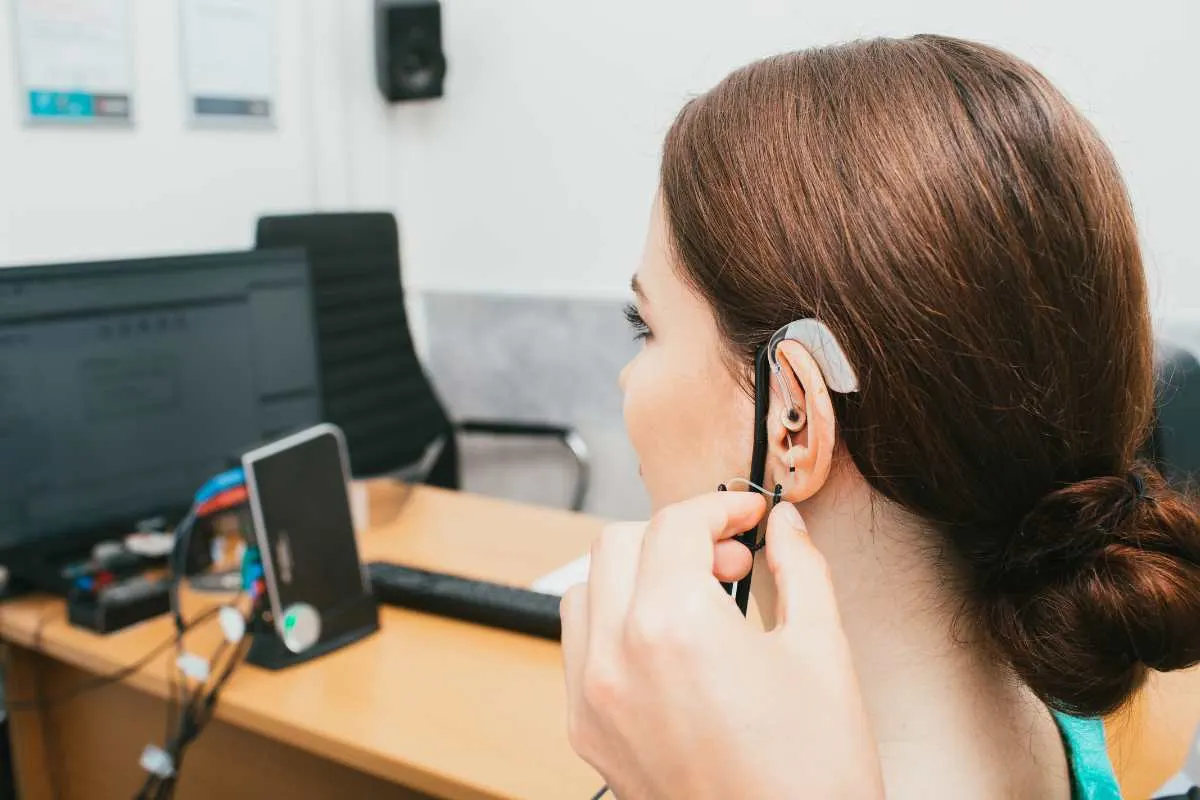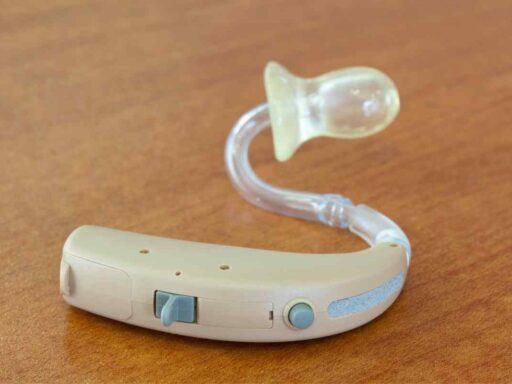When it comes to hearing aids, there are two main types: analog and digital. Analog hearing aids have been around for a long time and are known for their simplicity and affordability.
Digital hearing aids, on the other hand, are a more recent development and offer a range of advanced features that analog devices can’t match. But are digital hearing aids really better than analog?
The answer to this question is not a simple one. It depends on a variety of factors, including the type and severity of your hearing loss, your lifestyle and listening needs, and your budget.
In this article we’ll go through the differences between analog and digital hearing aids.
In general, digital hearing aids are more expensive than analog hearing aids, however, they also offer a range of benefits that may make them worth the extra cost.

One of the main advantages of digital hearing aids is their ability to filter out background noise. This is because digital hearing aids use advanced signal processing algorithms to distinguish between speech and noise, allowing you to hear conversations more clearly even in noisy environments.
Digital hearing aids also offer a wider range of volume and tone adjustments, allowing you to fine-tune your hearing aid/s to your specific needs.
However, some people may still prefer analog hearing aids, which can be more powerful and may be a better fit for those with severe hearing loss.
How Analog Hearing Aids Work
Analog hearing aids use micro processing to amplify sound. The sound waves are picked up by the microphone, which then converts them into electrical signals.
The signals are then amplified and sent to the speaker, which converts them back into sound waves that are then delivered to the ear. Analog hearing aids can be adjusted to amplify specific sound frequencies to match the user’s hearing loss.
One of the advantages of analog hearing aids is that they are less expensive than digital hearing aids. They also tend to be more durable and have longer battery life.

Analog hearing aids are also more powerful than digital hearing aids, meaning they can provide louder volume. However, this can also be a disadvantage as it can lead to feedback or whistling sounds.
They are not as effective at reducing background noise as digital hearing aids and do not have the same level of customization options as digital hearing aids.
Some analog hearing aids are programmable for different hearing loss and environments, but they cannot be programmed to suit individual needs and environments like digital hearing aids can.
How Digital Hearing Aids Work
Unlike analog hearing aids which amplify all sounds, digital hearing aids use microprocessors to convert sounds into digital signals.
These signals are then processed and amplified based on the user’s specific hearing needs. This allows for a higher level of clarity and sound quality compared to analog hearing aids.
Digital hearing aids can also suppress background noise, making it easier for the user to hear and understand speech, especially in noisy environments. This is achieved with directional microphones and noise reduction algorithms.

Some digital hearing aids can also automatically adjust to different listening environments, such as a quiet room or a noisy restaurant.
Another advantage is their ability to be programmed and customized to the user’s specific hearing needs.
This is done through a process called fitting, where the hearing healthcare professional adjusts the settings of the hearing aid based on the user’s audiogram and feedback. This allows for a more personalized and effective hearing solution.
Advantages of Digital Hearing Aids
Improved Sound Quality
Digital hearing aids have a clear advantage over analog ones when it comes to sound quality. This is because they use advanced signal processing technology to provide a more natural and realistic sound experience.
They can also amplify specific frequencies more effectively, which can help those with hearing loss to better distinguish speech sounds and other important sounds in their environment.
Customizable Settings
Another significant advantage of digital hearing aids is that they are highly customizable to the user’s specific hearing needs.
With advanced programming software, hearing healthcare professionals can adjust various settings, such as volume, noise reduction, and frequency response, to optimize the hearing aid’s performance for the individual user.
This means that digital hearing aids can provide a more tailored and personalized hearing experience compared to analog hearing aids.
Noise Reduction
Digital hearing aids are also superior to analog hearing aids when it comes to reducing background noise.
They use advanced algorithms to distinguish between speech and noise and can selectively amplify speech while suppressing unwanted noise.
This can be particularly beneficial in noisy environments, such as busy restaurants or crowded public spaces, where hearing can be challenging for those with hearing loss.
Directional Microphones
Directional microphones are another feature that is typically found in digital hearing aids. These microphones are designed to focus on sounds coming from a specific direction, while reducing sounds coming from other directions.
This can be particularly useful in situations where the user needs to focus on a specific sound source, such as a conversation partner, while minimizing distracting background noise.
Disadvantages of Digital Hearing Aids
Cost
Digital hearing aids are more expensive than their analog counterparts. This is due to the advanced technology and processing power required to create a digital hearing aid. Additionally, some insurance plans may not cover the cost of a digital hearing aid, making it more difficult for individuals to afford.
Battery Life
Digital hearing aids require more power to operate than analog hearing aids. This means that the batteries in digital hearing aids may need to be replaced more frequently, which can be inconvenient and costly.
Some digital hearing aids also require special batteries, which can be more expensive than standard hearing aid batteries.
Learning Curve
Switching from an analog hearing aid to a digital one can be a difficult adjustment for some individuals. Digital hearing aids offer a wider range of settings and features, which can be overwhelming for new users.
Additionally, digital hearing devices may require more frequent adjustments and programming than analog hearing aids, which can be time-consuming and frustrating for some individuals.
While digital hearing aids offer many benefits, it is important to consider the potential disadvantages before making a decision.
The cost, battery life, and learning curve associated with digital hearing aids may be a barrier for some individuals. It is important to speak with your audiologist to determine which type of hearing aid is best suited for your individual needs.
Advantages of Analog Hearing Aids
Cost
Analog hearing aids are less expensive than their digital counterparts. This is because they are simpler in design and do not have the advanced technology that digital hearing aids do. If cost is a primary concern, analog hearing aids may be a good option.
Battery Life
Analog hearing aids have longer battery life than digital ones. This is because they do not require as much power to operate. Some analog hearing aids can last up to two weeks on a single battery.
Ease of Use
Analog hearing aids are generally easier to use than digital hearing aids. They have simple controls and do not require programming or adjustments. This makes them a good option for those who are not tech-savvy or who prefer a more straightforward approach.
Overall, while digital hearing aids offer many advantages, analog hearing aids still have their place in the market. They may be a good option for those who are looking for a more affordable, simple, and reliable hearing aid.
Disadvantages of Analog Hearing Aids
Limited Customization
Analog hearing aids have limited customization options compared to digital hearing aids. The sound amplification in analog hearing aids is based on a simple circuit that cannot be adjusted to match the user’s unique hearing needs.
This means that analog hearing aids are not suitable for people with complex hearing loss or those who require precise sound amplification.
Feedback and Whistling
Analog hearing aids are more prone to feedback and whistling than digital hearing aids. This is because analog hearing aids amplify all sounds equally, including background noise and feedback, which can cause a whistling sound.
This can be very annoying and distracting for the user, and it can make it difficult to hear conversations or other important sounds.
Less Effective in Noisy Environments
Analog hearing aids are less effective in noisy environments than digital hearing aids. This is because analog hearing devices amplify all sounds, including background noise, which can make it difficult to hear conversations or other important sounds in noisy environments.
In contrast, digital hearing aids have advanced noise reduction features that can help filter out background noise and enhance speech sounds, making them more effective in noisy environments.
To Wrap Up…
Overall, analog hearing aids have some disadvantages compared to digital hearing aids. They have limited customization options, are more prone to feedback and whistling, and are less effective in noisy environments.
However, analog hearing aids can still be a good option for people with mild to moderate hearing loss who do not require advanced sound amplification or noise reduction features.






